Color Coordination in Interior Design is key in interior design. It helps make your home reflect your style. Choosing colours can be tough, but it’s crucial for a balanced look.
Designing your space means more than picking colours you like. It’s about creating a cohesive look. Think about the walls, furniture, and decor when choosing colours. This way, you can make a space that shows off your style.
Table of Contents
Introduction to Colour Coordination
Color Coordination in Interior Design is about picking colours that look good together. It’s vital in interior design for a beautiful and functional space. Knowing the basics helps you design a space that fits your needs and taste.
Key Takeaways
- Colour coordination in interior design is essential to create a harmonious and balanced atmosphere.
- Choosing colours in interior design requires careful consideration of the walls, furniture, and other decorative elements.
- Colour coordination in decoration can make or break the aesthetic of a room.
- Understanding the basics of colour coordination can help you create a space that is both aesthetically pleasing and functional.
- Colour coordination is a crucial aspect of interior design that can elevate the overall look and feel of a space.
- By mastering the art of colour coordination, you can create a space that is truly unique and reflective of your style.
Understanding Color Coordination in Interior Design
Color Coordination in Interior Design is key in interior design. It makes a space feel harmonious and balanced. The right colours can change a room’s mood and feel.
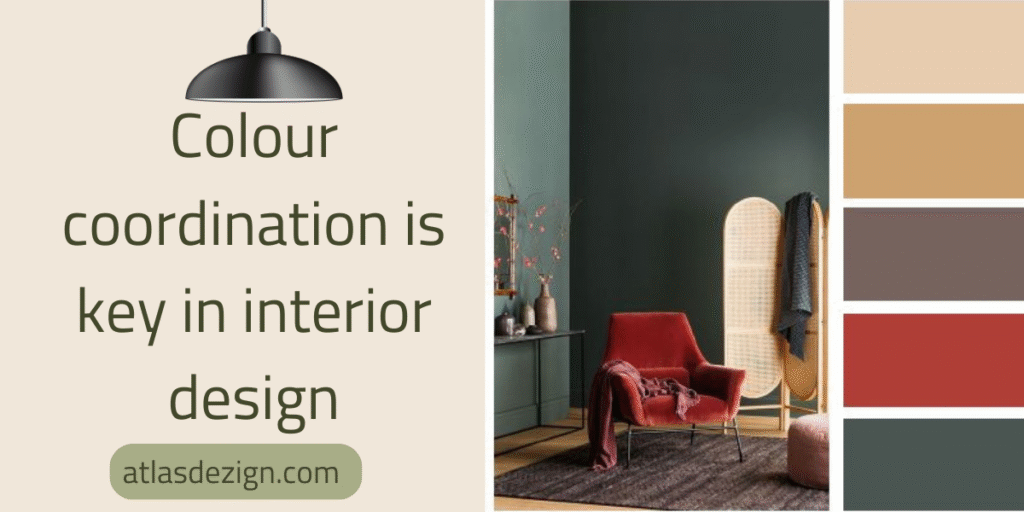
Choosing colours is more than picking what looks good. Colours can make us feel certain ways. Understanding the psychological impact of colours helps you pick the right ones for your space.
To start with Color Coordination in Interior Design, learn about colour theory. Know the colour wheel, primary and secondary colours, and how to mix them. These basics help create a space that looks good and works well.
Key Principles of Colour Coordination
- Balance: Creating a balance between warm and cool colours to achieve a harmonious atmosphere.
- Contrast: Using contrasting colours to create visual interest and depth.
- Harmony: Selecting colours that work well together to create a cohesive look.
Using these Color Coordination in Interior Design principles can make your space beautiful and functional. Think about how colours affect your space. Use colour mixing to make your space unique and personal.
The Revolutionary 60-30-10 Rule in Modern Interiors
The 60-30-10 rule is key for picking wall and furniture colours. It says 60% of the room should be a main colour, 30% a secondary, and 10% an accent. This rule helps make a space look good and show off your style.
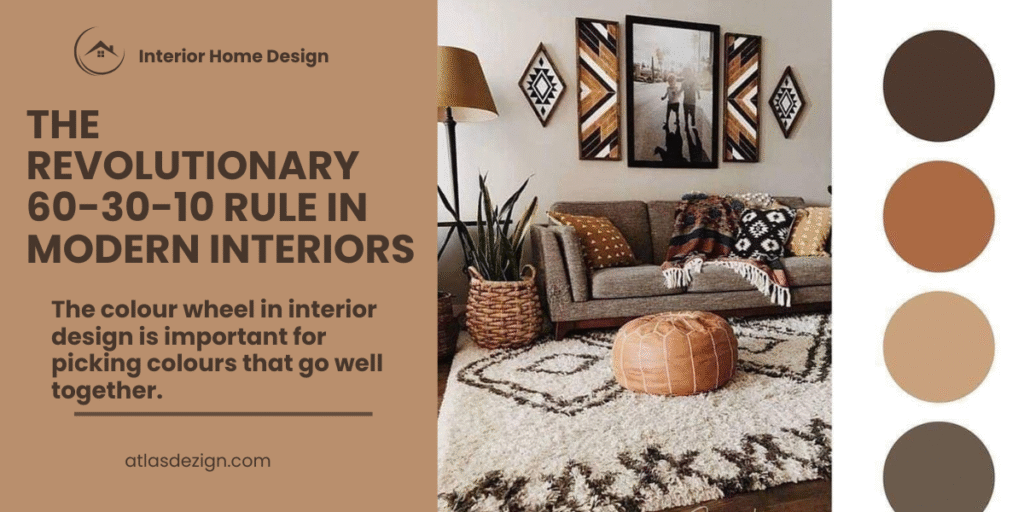
The colour wheel in interior design is important for picking colours that go well together. Colours opposite each other on the wheel make a space look balanced. For example, blue as the main colour, orange as the secondary, and yellow as the accent.
Here are some tips for using the 60-30-10 rule in your design:
- Start with a dominant colour for walls, like beige or grey.
- Choose a bold secondary colour for furniture, like red or blue.
- Use an accent colour in accessories, like throw pillows or vases.
By using the 60-30-10 rule and the colour wheel in interior design, you can make a beautiful space. Make sure to balance your wall and furniture colours for a great look.
Mastering Wall and Furniture Colour Combinations
Choosing the right colours for your walls and furniture is key in home decoration. It’s about finding the right balance between colours. You want to pick wall colours that match your furniture and decor. Then, add accent pieces to bring depth and interest.
Here are some tips for picking wall colours:
- Choose a colour that complements your furniture and decor
- Consider the natural light in the room and how it will affect the colour
- Think about the mood and atmosphere you want to create in the room
After picking your wall colour, think about your furniture colours. You can choose furniture that contrasts with your walls for a striking look. Or, go for furniture that matches for a cohesive feel. Adding accent pieces like throw pillows and rugs can make your space unique and personal.
By following these tips, you can create a beautiful and functional space. It will show off your personal style and enhance your home’s look.
Natural Light’s Impact on Colour Selection
Choosing the right colours for your interior design is key. Natural light plays a big role in how colours look. It’s important to pick colours that work well in different lighting conditions. This ensures your space looks good and feels right.
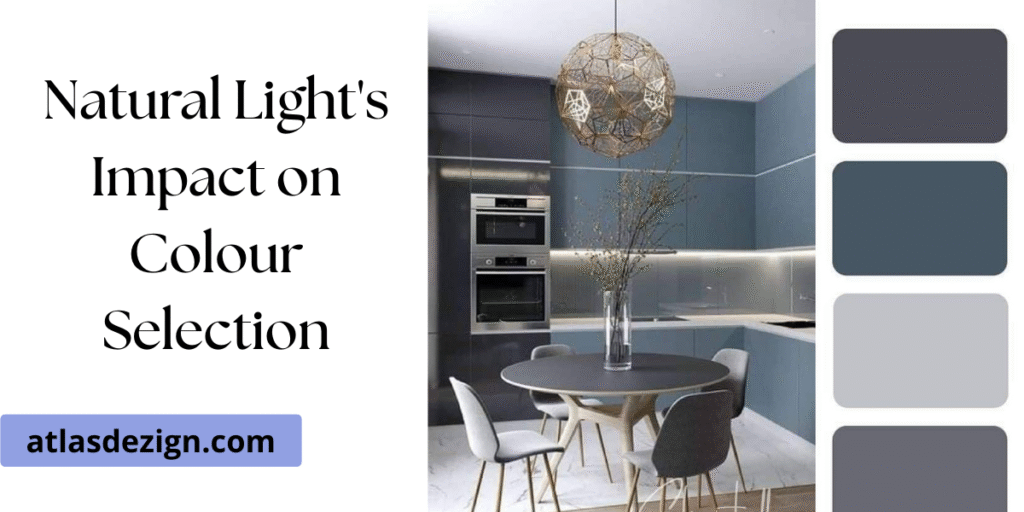
Natural light can change how colours look, depending on the time and room setup. A bright room might need lighter colours to avoid being too much. But a dim room could use deeper colours to feel cosy.
Here are some tips to use natural light well:
- Match colours with the room’s natural light, like soft blues and whites for bright rooms or warm neutrals for dim ones.
- Think about the light’s colour, with cool tones like blue and green for calm and warm tones like orange and yellow for cosiness.
- Use colour coordination to balance and harmonise your space, considering the light and room purpose.
Understanding how natural light affects colour choice is crucial. By using Color Coordination in Interior Design, you can make a space that looks great and works well. Always think about each room’s lighting and pick colours that make it welcoming and inviting.
Creating Visual Space Through Strategic Colour Use
Colour mixing is key to making a room look bigger. By picking the right wall and furniture colours, you can make a space feel larger. You can also define areas and create cool optical tricks.
Think about the 60-30-10 rule. This means 60% of the room is a main colour, 30% is a secondary, and 10% is an accent. This helps balance the space.
Using colour mixing techniques in decoration can make a room feel connected. For instance, light walls and darker furniture can add depth. This makes the room more interesting.
Colours can also help divide a room into different areas. Like turning a corner into a cosy reading spot or a dedicated office.
To play with height or width, use colours wisely. A light ceiling can make a room seem taller. A dark floor can make it seem shorter. By choosing the right colour mixing techniques in decoration and wall,l and furniture colours, you can make your rooms feel bigger and more welcoming.
Warm vs. Cool Colours: Finding the Perfect Balance
Understanding the difference between warm and cool colours is key to Color Coordination in Interior Design. Warm colours, like orange and red, make a space cosy and inviting. Cool colours, such as blue and green, bring calm and relaxation. Think about the room’s natural light and direction to find the right mix.
In Color Coordination in Interior Design, the 60-30-10 rule is helpful. Use 60% of the room for a main colour, 30% for a secondary, and 10% for an accent. This rule helps create a balanced and beautiful space.
Here are some tips for balancing warm and cool colours:
- Place warm colours on walls and cool colours on furniture for a balanced look.
- Think about the flooring colour and how it will mix with the room’s colours.
- Neutral colours, like beige or grey, can balance bold warm or cool colours.
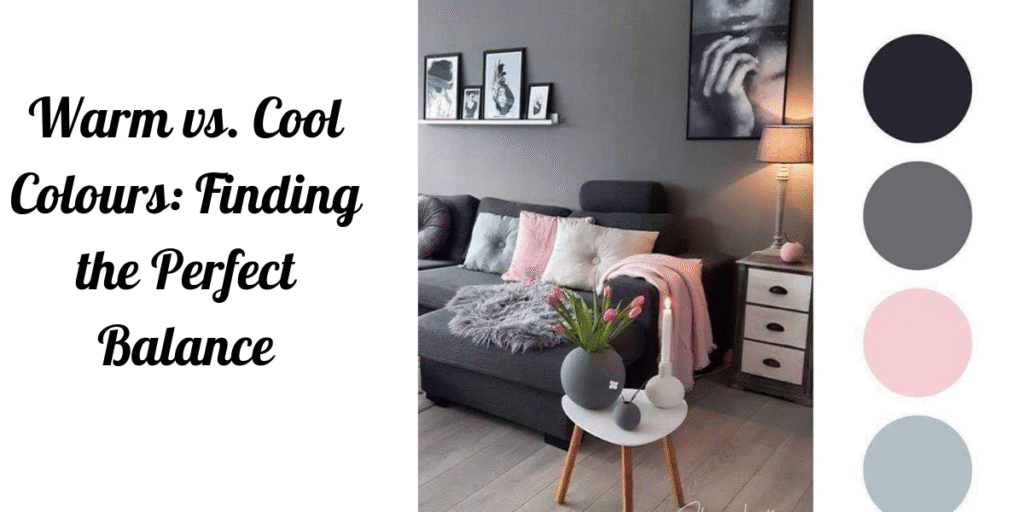
Style-Specific Colour Coordination Techniques
Choosing colours for interior design can greatly change a room’s look and feel. Different styles need special colour techniques to look good together.
Think about the mood you want in your space. Colour psychology is key, as colours can make us feel calm or excited.
- Modern spaces use neutral colours like white, grey, and black. They add bold colours for a pop.
- Traditional rooms have rich colours like navy, green, and beige.
- Contemporary spaces mix styles. They use bold colours and patterns for a unique look.
Knowing how to use colours can make your space reflect your style. It can also improve your mood and well-being.
Common Colour Coordination Mistakes to Avoid
Understanding the colour wheel is key in interior design. It helps pick harmonic and contrasting colours for a balanced look. Yet, many people make mistakes that mess up the space’s harmony.
To steer clear of these errors, keep these tips in mind:
- Stick to a few colours to avoid too much visual noise.
- Follow the 60-30-10 rule for a balanced mix of colours.
- Choose colours that work well together, using the colour wheel as a guide.
By avoiding these common mistakes and using the colour wheel, you can make a space that looks good and shows off your style. The secret to great colour coordination is finding the right mix of harmonic and contrasting colours. The colour wheel in interior design is your best friend here.
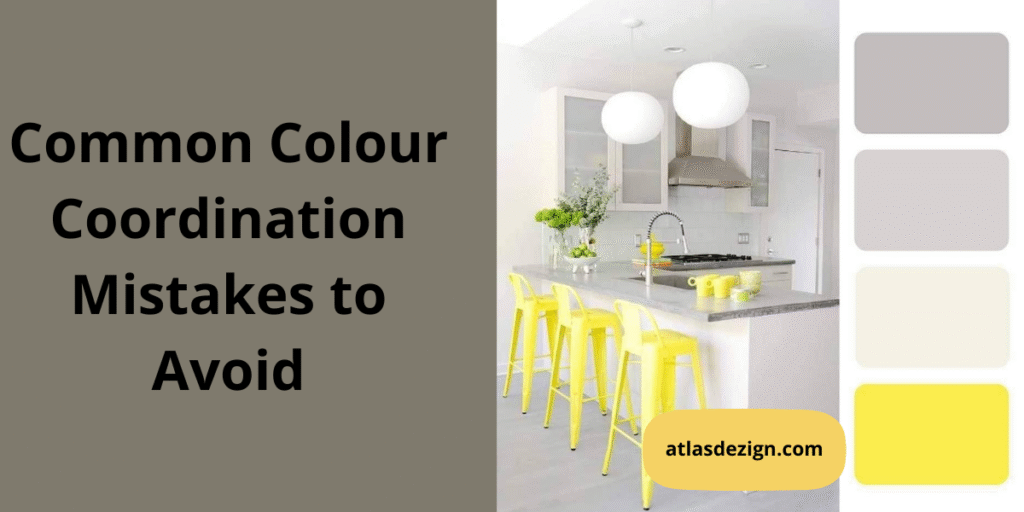
Seasonal Colour Transitions in Your Space
When decorating your home, think about the seasons and how they change the best colours for your space. You can make your home look great by changing your colours with the seasons. For example, use light, bright colours in summer and warm, rich tones in fall.
Changing colours with the seasons can make your home look smooth and nice. Neutral colours are a good base. Then, add colours for each season with accessories and decor. This way, you can refresh your space without a big change.
- Start with a neutral base colour and add seasonal accents
- Use natural elements, such as plants and wood, to bring in seasonal textures and colours
- Experiment with different colour combinations to find the perfect balance for each season
Using these tips, you can make your home look great all year. It will always show the best colours for interior design.
Professional Tips for Colour Scheme Development
Creating a cohesive colour scheme is key in interior design. The 60-30-10 rule is a good guide. It suggests using 60% of one colour, 30% of another, and 10% as an accent. This balance helps in mixing colours effectively.
Natural light and room direction also play a role. Bright rooms can handle bold colours, while dimmer ones need softer tones. This helps in choosing the right colours for your space.
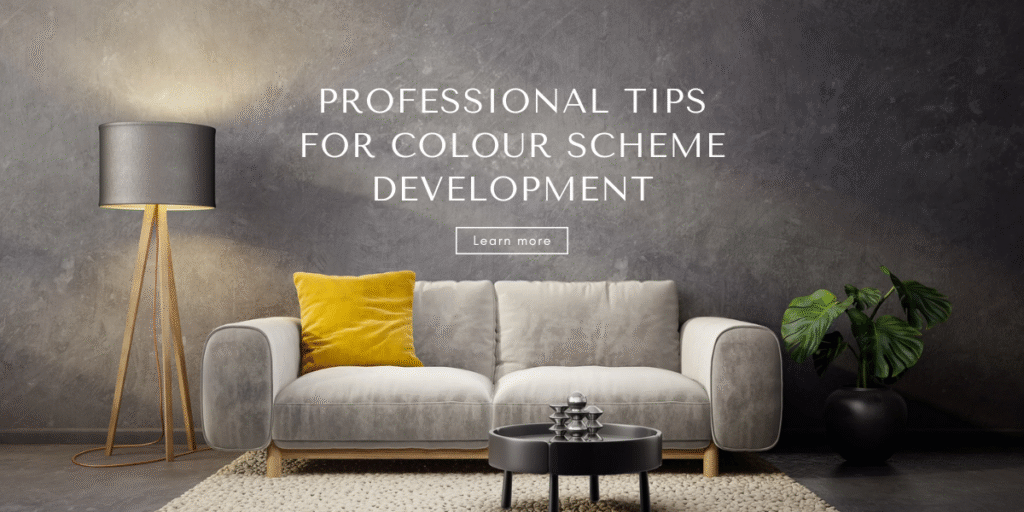
Think about the emotional impact of colour, too. Warm colours make spaces cosy, while cool colours are calming. Picking colours that match your mood can make your space beautiful and functional.
Here are more tips for colour schemes:
- Begin with a neutral base and add accent colours for interest
- Consider furniture, flooring, and decor when picking colours
- Feel free to experiment with different colour combinations
Advanced Colour Coordination Techniques for Different Rooms
Color Coordination in Interior Design varies by room. Knowing how to use the colour wheel helps create harmony in each space. Think about the wall and furniture colours that will be the main focus in each room.
In a bedroom, soothing colours help you relax. A living room needs a mix of warm and cool colours for socialising. Choose colours that match the room’s purpose.
- Using complementary colours to create visual interest in a room.
- Applying the 60-30-10 rule to balance dominant, secondary, and accent colours.
- Considering the natural light in a room and how it affects colour perception.
By using these methods and understanding each room’s unique needs, you can create a colour scheme that looks great and works well.
Bringing Your Colour Vision to Life
Throughout this guide, you’ve learned how color coordination in interior design makes spaces look great. You now know how to use the 60-30-10 rule and the psychology of colour. This knowledge lets you turn your home into a place that shows off your style and tastes.
Colour coordination in decoration is all about finding what works for you. Try out different colours and combinations to see what you like. Use natural light and smart colour placement to keep your space lively and interesting.
Now, you have the skills to make your colour dreams come true. Be creative, enjoy the process, and see how colour can change your home.
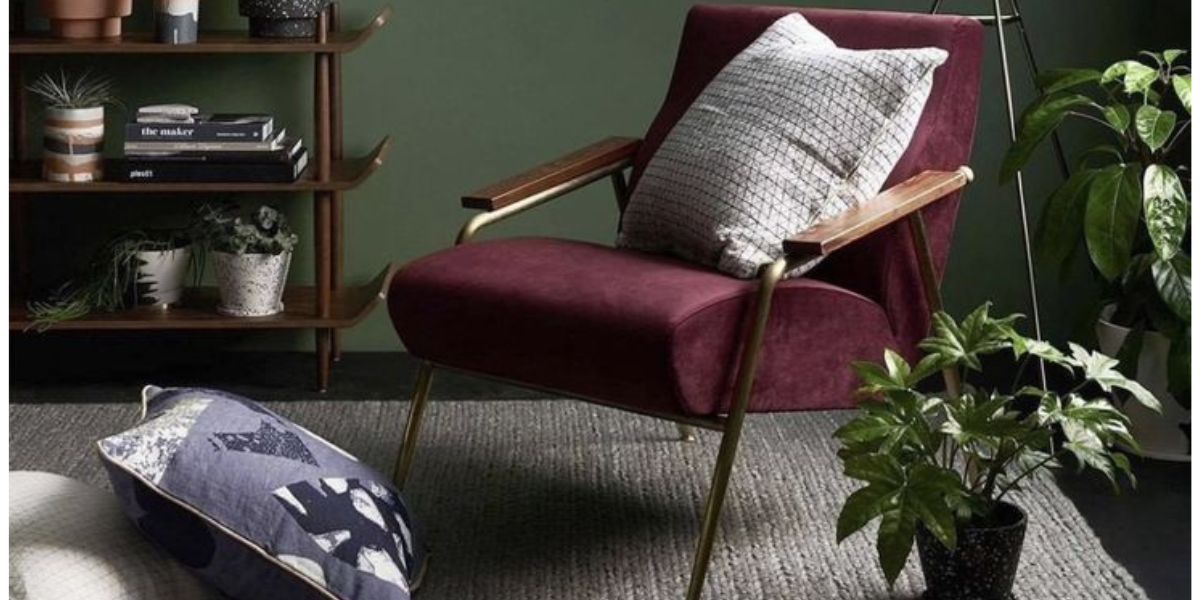
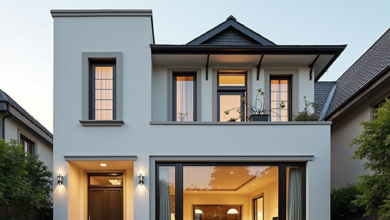 How to Choose the Best Window Color: 7 Pro Tips
How to Choose the Best Window Color: 7 Pro Tips